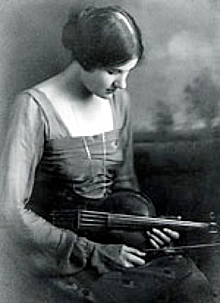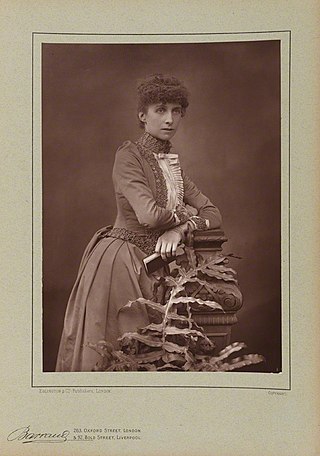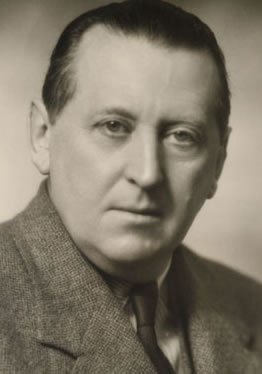Related Research Articles

Giuseppe Domenico Scarlatti, also known as Domingo or Doménico Scarlatti, was an Italian composer. He is classified primarily as a Baroque composer chronologically, although his music was influential in the development of the Classical style. Like his renowned father Alessandro Scarlatti, he composed in a variety of musical forms, although today he is known mainly for his 555 keyboard sonatas. He spent much of his life in the service of the Portuguese and Spanish royal families.

Rebecca Helferich Clarke was a British-American classical composer and violist. Internationally renowned as a viola virtuoso, she also became one of the first female professional orchestral players in London.

Sir Granville Ransome Bantock was a British composer of classical music.

Tobias Augustus Matthay was an English pianist, teacher, and composer.

Frederick Septimus Kelly was an Australian and British musician and composer and a rower who competed for Britain in the 1908 Summer Olympics. He joined the Royal Naval Volunteer Reserve during WWI and, after surviving the Gallipoli campaign, he was killed in action in the Battle of the Somme.

Morfydd Llwyn Owen was a Welsh composer, pianist and mezzo-soprano. A prolific composer, as well as a member of influential intellectual circles, she died shortly before her 27th birthday.
William Yeates Hurlstone was an English composer. Showing brilliant musical talent from an early age, he died young, before his full potential could be realized. Nevertheless, he left behind an exquisite, albeit small, body of work. His teacher Sir Charles Villiers Stanford considered him the most talented of his pupils, above Ralph Vaughan Williams and Gustav Holst.

Sir George Alexander Macfarren was an English composer and musicologist.

Charles Avison was an English composer during the Baroque and Classical periods. He was a church organist at St John The Baptist Church in Newcastle and at St. Nicholas's Church. He is most known for his 12 Concerti Grossi after Scarlatti and his Essay on Musical Expression, the first music criticism published in English. He composed in a transitional style that alternated between Baroque and Classical idioms.

Rosalind Frances Ellicott was an English composer, considered one of the leading female composers of her generation.

Sir John Blackwood McEwen was a Scottish classical composer and educator. He was professor of harmony and composition at the Royal Academy of Music, London, from 1898 to 1924, and principal from 1924 to 1936. He was a prolific composer, but made few efforts to bring his music to the notice of the general public.

Edwin York Bowen was an English composer and pianist. Bowen's musical career spanned more than fifty years during which time he wrote over 160 works. As well as being a pianist and composer, Bowen was a talented conductor, organist, violist and horn player. Despite achieving considerable success during his lifetime, many of the composer's works remained unpublished and unperformed until after his death in 1961. Bowen's compositional style is widely considered as ‘Romantic’ and his works are often characterized by their rich harmonic language.

Frederick Corder was an English composer and music teacher.
Benjamin James Dale was an English composer and academic who had a long association with the Royal Academy of Music. Dale showed compositional talent from an early age and went on to write a small but notable corpus of works. His best-known composition is probably the large-scale Piano Sonata in D minor he started while still a student at the Royal Academy of Music, which communicates in a potent late romantic style. Christopher Foreman has proposed a comprehensive reassessment of Benjamin Dale's music. Dale married one of his students, the pianist and composer Kathleen Richards in 1921.
Gary Cooper is an English conductor and classical keyboardist who specialises in the harpsichord and fortepiano. He is known as an interpreter of the keyboard music of Bach and Mozart, and as a conductor of historically informed performances of music from the Renaissance, Baroque, Classical and Romantic periods.
The Avison Ensemble is one of England's leading exponents of classical music on period instruments. It is named after Charles Avison (1709–1770), the Newcastle-born composer, conductor and organist, considered ‘the most important English concerto composer of the 18th Century’. Comprising some of Europe's leading musicians and soloists, the Ensemble is directed by violinist Pavlo Beznosiuk. It varies in numbers depending on the repertoire being performed, and is typically of chamber ensemble or concerto grosso size, expanding to full chamber orchestra when needed.

Ethel Barns was an English violinist, pianist and composer. She was born in London and entered the Royal Academy of Music at as a teenager, where she studied with Emile Sauret for violin, Ebenezer Prout for composition and Frederick Westlake for piano.

Charles Villiers Stanford's Violin Sonata No. 2 in A major, Op. 70, was composed around 1898. Performed only once during the composer's lifetime, the sonata remained unpublished until 2006.
Arthur Alexander was a New Zealand-born pianist, teacher and composer who spent most of his career in the United Kingdom.
Eleanor Clementine Rudall was a composer and pianist, who after a promising start while a student at the Royal Academy of Music struggled to find more widespread recognition. She continued her career teaching piano, harmony and composition, and in 1927 became the second wife of composer Frederick Corder. She was a friend and collaborator of English composer and pianist Emma Lomax.
References
- ↑ "136TH GARLAND OF BRITISH LIGHT MUSIC COMPOSERS" . Retrieved 29 February 2012.
- ↑ Wier, Albert Ernest (1938). The Macmillan encyclopedia of music and musicians. Bruno Hessling.
- ↑ Hardy, Lisa (2001). The British piano sonata, 1870-1945.
- ↑ Foreman, Lewis (2007). Bax: a composer and his times.
- ↑ Clark, Linda L. (2008). Women and Achievement in Nineteenth-Century Europe.
- ↑ "Frances Mary Hefford Cocking" . Retrieved 29 February 2012.[ permanent dead link ]